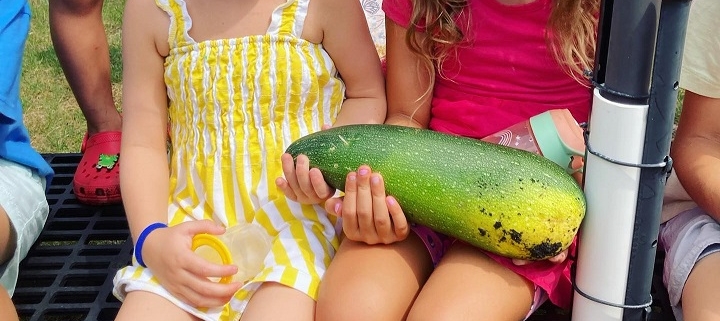Science-Backed Activities That Make Eating an Adventure
We all know that one kid who lives off mac and cheese, hot dogs, and chicken nuggets – getting them to try something new can feel like an impossible task. But studies show that engaging kids in food-related activities can increase their willingness to try new foods – and even develop healthier eating habits.
In this article, we’ll explore a few creative, hands-on activities that can help picky eaters expand their palates – without the usual power struggles. From turning fruits and veggies into art to getting them involved in the cooking process, these fun strategies are sure to make mealtime less stressful and more enjoyable for everyone.
The Science Behind Picky Eating
Before we dive into the activities, let’s take a quick look at why kids can be so picky about food. Food neophobia (the fear of trying new foods) is a normal stage in childhood development. Research suggests that children’s preferences are shaped by their early experiences with food, including exposure and familiarity. When kids are given opportunities to engage with food in positive, non-threatening ways, they’re more likely to be open to new tastes and textures.
One study published in the Journal of Nutrition Education and Behavior found that children who were involved in food preparation were more likely to try new foods and develop a positive attitude toward healthy eating. So, by turning mealtime into an adventure and involving kids in the process, you can help them develop healthier eating habits.
Here are some activities to try:
1. Make Food Art
Food art can spark curiosity and excitement, especially when you get creative with shapes, colors, and textures. You don’t have to be a professional artist—just a little imagination goes a long way.
For example, try turning a simple fruit salad into a “rainbow plate” by arranging fruits of different colors in rows. Or make a “vegetable monster” by arranging broccoli, carrots, and peas to form fun faces. Kids are more likely to try something new when it’s presented in a playful, engaging way.
For even more inspiration, check out Terry Border’s playful food-themed books, like Peanut Butter & Cupcake and Happy Birthday, Cupcake. These fun stories are sure to spark even more creative ideas in the kitchen!
Tip: Create “Jello Shapes” using fruit-flavored gelatin (or make your own with natural fruit juice) and healthy additions like blended fruit or even veggies like carrots or spinach for a twist. Once the Jello is set, use cookie cutters to create fun shapes like stars, hearts, or animals. Kids will love picking out their favorite shapes, and it’s an easy way to sneak in some fruits and even vegetables! You can also make a layered Jello effect using different colors for a rainbow treat that’s both fun and visually appealing.
2. Let Them Be the Chef
A 2017 study in Appetite found that children who help prepare meals are more likely to try new foods and develop a positive relationship with eating. Getting kids involved in the cooking process gives them a sense of control and ownership over their meals, making them more likely to enjoy what they’ve helped create.
Set up a mini cooking station at home where kids can help wash, chop (with child-safe knives), or stir ingredients. For example, you could make a “DIY pizza night” where kids can choose their own toppings, or a “taco bar” where they can build their own tacos with different veggies, proteins, and sauces. This gives them the freedom to experiment with new foods in a non-pressured way.
Tip: Start with foods they’re already familiar with and gradually introduce new ingredients. For example, if your child loves pizza, let them add some new veggies like spinach or bell peppers to their toppings. A falafel bar could be a fun next step, where they get to roll their own falafel balls and choose toppings like hummus, tzatziki, and a variety of veggies. Or you might set up a mini burger station with small buns and a variety of toppings like cheese, lettuce, pickles, and tomatoes. You can offer different protein options, like beef, chicken, or veggie patties, so kids can mix and match.
3. Introduce “Try It Tuesdays”
Studies show that repeated exposure to new foods increases the likelihood that kids will accept them. The American Journal of Clinical Nutrition suggests that it may take eight to 10 exposures for a child to accept a new food. This means that if you keep offering a new food in different ways, kids are more likely to eventually try it — and even like it!
One way to introduce new foods is by creating a weekly “Try It Tuesday” tradition. Each week, choose one new food (or a few) for your child to try. Make it a fun challenge by turning it into a family activity where everyone tries the new food together. Whether it’s a new vegetable, fruit, or even a new kind of pasta, this tradition can make the process less intimidating. You can also offer rewards for trying new things, like letting the child pick a food to try next week.
Tip: Pair the new food with something your child already likes. For example, if you’re introducing sweet potatoes, serve them with honey, butter, and cinnamon, or serve them in a familiar way — like mashed.
4. Create a “Food Adventure” Journal
Kids love to track their progress, and a food adventure journal is a great way to make eating new foods feel like a fun quest. Encourage your child to document their food explorations by drawing pictures or writing down how each new food made them feel. You can even create a reward system, where they get a sticker or small treat for trying a new food.
For older kids, you can make the journal more interesting by including fun facts about the foods they’re trying. For example, did you know that carrots are good for your eyes, or that bananas are packed with potassium to give you energy?
Tip: Create a “food passport” where your child can collect stamps or stickers each time they try a new food. This adds an element of adventure and excitement to the process!
5. Turn Food Into a Sensory Experience
Sensory play is an important part of childhood development, and food can be a great way to engage multiple senses at once. Encourage your child to explore food with their hands, smell the ingredients, and notice how they look and feel. This approach helps children connect with food on a deeper level and reduces the pressure to “eat it or else.”
For example, set up a “sensory station” with different fruits and veggies. Let your child feel the texture, smell the scent, taste a small bite, and rate it on a scale from 1-5. This approach makes food exploration less intimidating.
Tip: You can also use sensory play to teach your child about the different textures and flavors of food. For example, try blindfolded taste tests where they guess what food they’re tasting based on texture and flavor.
6. Host a Family Potluck Cooking Contest
Get kids excited about trying new foods while enjoying a friendly competition. Whether it’s a soup contest, chili cook-off, or a meatloaf fest, involving kids in the process of tasting and judging can help them feel more invested in the food and open to new flavors.
In a family food contest, kids can take on the role of judge, rating each dish based on flavor, creativity, and presentation. You can even give out fun “awards” for categories like “most colorful” or “most unique flavor,” which adds an extra element of excitement.
This kind of contest fosters a sense of community and curiosity around food, and extended family members can serve as positive role models. Whether it’s your grandmother’s secret chili recipe or a new twist on classic vegetable soup, kids are more likely to say “yes” to unfamiliar foods when they see their family enjoying the process.
Tip: Add an extra layer of fun to your family cooking contest by introducing a “secret ingredient” challenge. Before the contest, choose a mystery ingredient that everyone has to incorporate into their dish. It could be something like spinach, sweet potatoes, or even a unique spice like cumin. The twist? The kids get to decide what the secret ingredient will be!
Final Thoughts
Making mealtime an adventure doesn’t have to be complicated. With hands-on activities like food art, cooking, and sensory exploration, you can help your child develop a positive relationship with food and encourage them to try new things. For even more fun, Shine NYC’s Kitchen Stars class offers kids a chance to explore healthy cooking while building confidence in the kitchen. With creativity and patience, mealtime can become an exciting and educational experience for the whole family.



